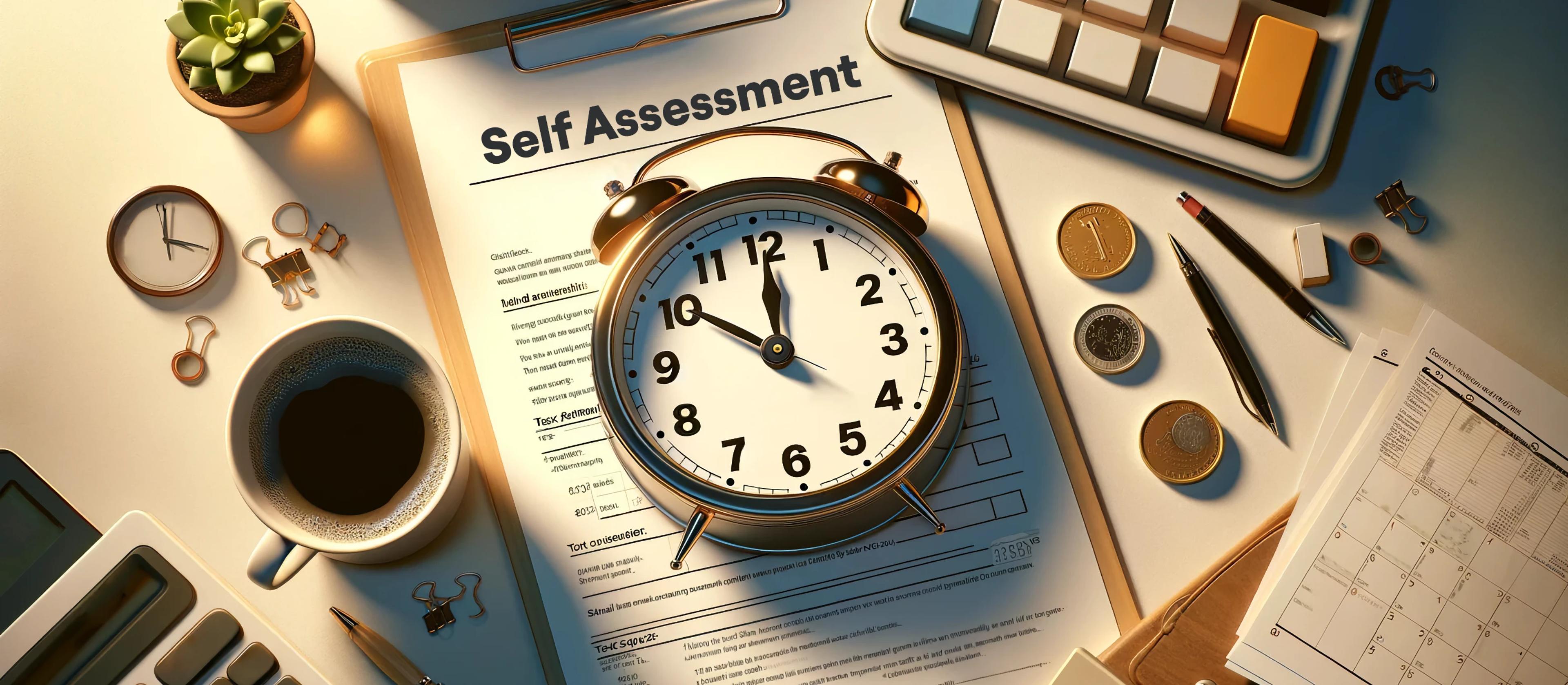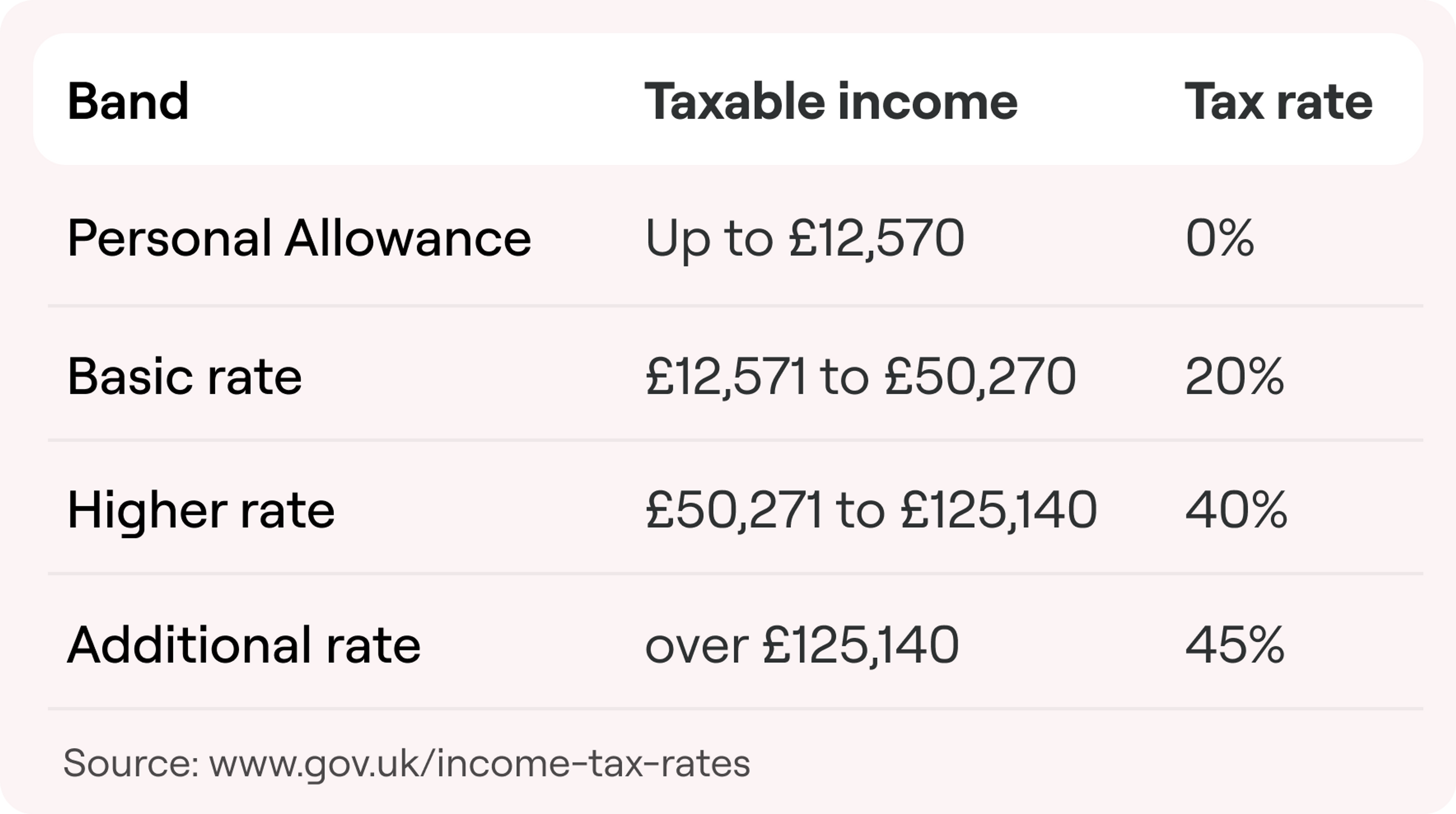Reading time: 6 minutes
Self Assessment Explained: A Complete Guide
- By
- Murray Humphrey

With January 31st on the horizon, it’s time to chat about the Self Assessment tax return deadline. Now, tax can sound daunting and, let’s be honest, a bit of a snooze-fest. But fear not! We’re here to guide you through this maze with a friendly hand and some top tips, ensuring you’re all set and stress-free well before the stroke of midnight.
What is Self Assessment?
Self Assessment is a system HM Revenue and Customs (HMRC) use to calculate and collect Income Tax and National Insurance. While taxes are typically deducted automatically from wages and pensions, people and businesses with other forms of income must report it in a Self Assessment tax return.
Do I Need to File a Self Assessment tax return?
You need to file a Self Assessment tax return if you receive income that isn’t taxed at the source. For example, if you’re self employed, in a business partnership or a company director you’ll need to file one.
It’s important to note that even if you are not self-employed, there may be circumstances where you are required to complete a Self Assessment tax return on income that is not taxed automatically.
When you’re employed, Income Tax is deducted automatically from your wage, but this doesn’t happen for other types of income like pensions, property, investments and dividends.
How do I register for Self Assessment?
If you’re filing for the first time or did not send a tax return last year, you must register for Self Assessment. It’s crucial to register by 5 October following the end of the tax year you need to report on. If you’ve registered before, you don’t need to do it again unless you didn’t file a tax return in the previous year.
What is the Self Assessment deadline?
There are three crucial deadlines for submitting tax returns and making payments:
- Paper tax returns must be submitted by midnight on 31 October.
- Online tax returns need to be filed by midnight on 31 January of the following year.
- The tax owed must also be paid by midnight on 31 January. If these deadlines are missed, there may be penalties and interest charges.
What Self Assessment penalties are there?
If you miss the deadline for submitting your tax return or paying your bill, you’ll incur a late filing penalty of £100 if your tax return is up to 3 months late. More significant penalties apply for longer delays. Interest is charged on late payments. However, you can appeal against a penalty if you have a reasonable excuse.
What do I need in order to complete the Self Assessment?
If this is your first Self Assessment, you would have needed to register with HMRC by the 5th of October telling them that you need to submit a Self Assessment tax return. HMRC would have sent you your Unique Taxpayer Reference (UTR) number which you’ll need for the return.
You’ll also need to gather a few documents about your income and relevant costs throughout the tax year. This includes:
- Information on all your untaxed income (this includes dividends, partnership income, interest from savings or investments, side gigs, rental income etc).
- Details of expenses for your self-employed company.
- Records of pension contributions and tax relief (get in touch with us to get a PDF of all your pension contributions this tax year).
- Proof of any income from employment (like your P60 or P45).
How do I complete my Self Assessment?
You have a couple of options.
- You can file your Self Assessment tax return online, which is a more convenient method for many. When filing online, you can view past returns, check details, print tax calculations, and sign up for paperless notifications.
- Using an accountant service: Fancy a stress-free experience? Professional accountants can take care of it all. Penfold customers get a sweet 10% discount with our partner, TaxScouts.
How much Income Tax will I pay?
Everyone has a personal allowance – that’s the amount you can earn tax-free, which currently sits at £12,570. Earn above that, and you’ll need to pay tax at different rates depending on your income. Don’t worry, here’s a breakdown of income brands and their tax rates to help you figure out what you might owe.

Is National Insurance part of Self Assessment?
Self employed workers, are responsible for calculating and paying National Insurance contributions along with Income Tax through Self Assessment. There are two main types of National Insurance contributions for the self-employed:
- Class 2 National Insurance: This is a flat rate contribution paid weekly. As of the tax year 2023/24, if your profits from self-employment exceed £6,725, you’re required to pay Class 2 National Insurance at a rate of £3.45 each week.
- Class 4 National Insurance: This is a percentage of your profits. In the 2023/24 tax year, you pay 9% on profits between £12,570 and £50,270, and 2% on any profit over £50,271.
The majority of self-employed individuals pay these contributions annually as part of their Self Assessment tax bill. Class 4 National Insurance is generally paid to HMRC every six months – by 31st July and 31st January – using their ‘payment on account’ system, which is an estimate of your future profits based on those of the previous tax year.
It’s important to note that these contributions are crucial for entitlement to certain state benefits, including the state pension. Failing to pay National Insurance contributions when you’re self-employed can result in penalties, so it’s essential to be organised and understand the system.
Capital Gains Tax and Self Assessment
Capital Gains Tax (CGT) is a relevant consideration for Self Assessment tax returns if you have disposed of assets that have increased in value. You are required to pay CGT if your total taxable gains exceed your annual Capital Gains Tax allowance. To calculate your total taxable gains, you need to work out the gain for each asset, add these together, and then deduct any allowable losses.
For the tax year 2023 to 2024, the annual exempt amount for Capital Gains Tax is £6,000 for individuals, personal representatives, and trustees for disabled people. For most other trustees, the annual exempt amount is £3,000.
For Self Assessment, you should use the SA108 supplementary pages to record capital gains and losses on your SA100 Tax Return. These forms and helpsheets provide guidance on various aspects of Capital Gains Tax as it relates to different types of assets, such as personal possessions, shares, property, or business assets.
More unique situations
Self Assessment can vary significantly depending on individual circumstances. Unique situations may require additional attention:
- Multiple Income Sources: If you have various income streams, each might have different tax rules. It’s important to understand how these interact and are reported.
- High Earners: Higher income levels can trigger complex tax considerations, like the High Income Child Benefit Charge or reduced personal allowances.
- Inheritance and Capital Gains: Handling inheritance tax and capital gains from estate sales can be intricate.
- Foreign Income: Income from overseas adds complexity due to potential double taxation and the need to understand international tax agreements.
In these cases, seeking specialised tax advice is often beneficial to ensure compliance and optimise tax liability. For detailed guidance, consider consulting a professional tax advisor or refer to specific HMRC resources.
HMRC Self Assessment Queries and Audits
If HMRC queries your Self Assessment tax return or decides to conduct an audit, it’s important to be prepared. HMRC may ask for clarification or evidence for certain figures on your return. This could be due to discrepancies or simply as part of their random checks. In an audit, HMRC thoroughly reviews your financial records and tax return. It’s essential to have all your documents organised and readily available, including income records, expense receipts, and bank statements. Cooperating fully and promptly with HMRC’s requests is crucial. If discrepancies are found, you may have to pay additional tax, interest, or penalties. Legal advice or assistance from a tax professional can be beneficial in these situations.
Getting help with Self Assessment
HMRC provides various online resources and tools to assist with Self Assessment. These include a digital assistant, community forums, social media, email updates, and instructional videos and webinars. For more detailed information and specific guidance, you can visit the Self Assessment section on the GOV.UK website.
If you need any further help with your tax return or sorting out your pension contributions, our team is at your service. Just pop into our online chat or drop us an email, and we’ll provide support tailored to your unique situation.

Murray Humphrey
Penfold